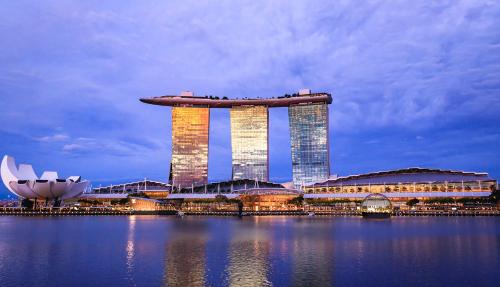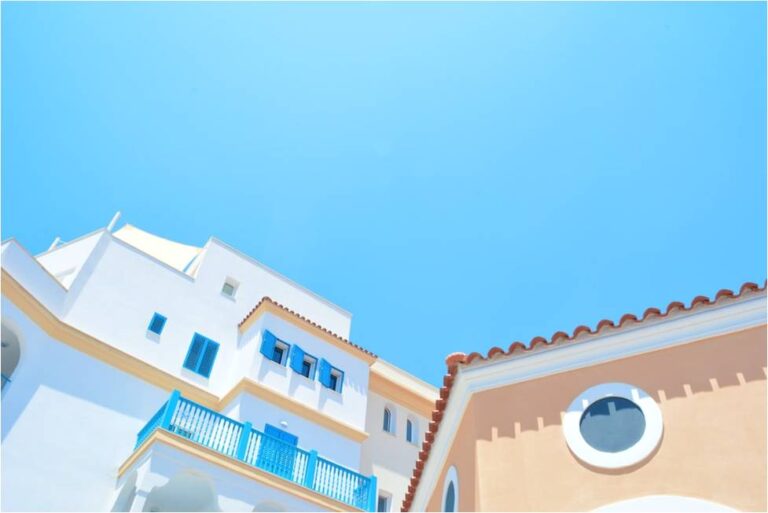
Singapore
In the vast tapestry of travel destinations, Singapore stands as a testament to the significance of local travels. Most tourists heading to Asia make a beeline for Taiwan’s night market or Tokyo’s neon lights. Singapore often gets overlooked as just a stopover—too sanitised, too perfect. But these tourists miss an important point. While many overlook the smaller, lesser-known destinations in favour of tourist hotspots and renowned destinations, these hidden gems often hold a deep, rich culture and history, just waiting to be discovered.
The concept of familiarisation is not new, and even Singaporean residents become desensitised and ambivalent to the pristine streets, stunning architecture, and the harmonious blend of nature and urbanisation, which is the city’s characteristic feature.
However, taking a step back and viewing Singapore through a tourist’s lens reveals a different story.
The Marina Bay area, a hotspot for incoming tourists, holds a multitude of experiences. Whether that’s exploring Southeast Asia’s largest selection of luxury fashion or taking pictures with the Merlion — the head, a lion to represent the city’s name of Singapore, and the tail, a nod to Singapore’s origins as a fishing village (Temasek) — tourists have a host of unique features to explore. Seeing Marina Bay for the first time is an experience in itself. Turning round the corner, the whole bay opens up before you – the spiky dome of Marina Bay Sands, the Merlion shooting its endless water stream, the futuristic purple spikes of Gardens by the Bay reaching into the sky. Tourist trap? Maybe. But the magic is undeniable.
In addition, the area around the luxurious and iconic magnum opus presents an adept example of realizing a savvy urban planning of having a technologically advanced city while maintaining aesthetic appeal. Unlike many modern cities that have become concrete jungles in their pursuit of progress, Singapore has managed to integrate greenery into its urban landscape. For example, the Marina Barrage, a flood control facility, serves as a vibrant community hub on weekends, where families spend their Sundays flying kites against that gorgeous skyline, appreciating the breeze and the sunset. The Gardens by the Bay, filled with its tower Supertrees and climate-controlled conservatories, indoor waterfall, and a collection of over 1.5 million plants from every continent except Antarctica, is beautiful and otherworldly, yet practical. East Coast Park, located along Singapore’s coastline, stands as a testament to the city’s innovative urban planning. This man-made beach and park transformed empty land into a vibrant community space. Here, cycling paths wind through groves of trees, while restaurants buzz with eateries, and community events bring tourists and residents alike.
This emphasis on community extends beyond the eyes of tourist brochures of authenticity. Perhaps nowhere is this more evident than in the hawker centers—recognised by UNESCO as part of humanity’s intangible cultural heritage. These food courts serve as a space where corporate workers and construction workers sit side by side at communal tables, sharing meals that tell the story of a diverse cultural heritage. The affordable yet delicious dishes represent not just culinary traditions but the essence of Singapore’s multicultural identity: a place where racial and social barriers dissolve over shared plates of Chicken Rice and Nasi Goreng.
The spirit of cultural preservation exists as colorful expressions in districts like Chinatown and Little India. In Chinatown, walking down the roads under the shade to avoid the blistering heat, scents of a pungent traditional medicine shop blends with that of a next-door rich hipster coffee roaster. Little India, on the other hand, has streets pulsing with the zest of authenticity through centuries-old traditions with a twinge of contemporary. These regions and many more demonstrate how Singapore has preserved cultural authenticity while embracing modern development – not as opposing forces, but as complementary elements.
This dedication to preserving heritage yet extends beyond cultural enclaves to Singapore’s historical landmarks: The National Museum of Singapore, Fort Canning, and the Former Ford Factory stand not just as tourist attractions, but as pivotal retellings of a national memory. These sites chronicle Singapore’s journey from a colonial outpost to an independent nation, each telling a different chapter. The Former Ford Factory, where British forces surrendered to the Japanese in 1942, now houses exhibitions that document the hardships endured during the Japanese occupation. This period marked a critical turning point in Singapore’s history, exposing the gaping holes of colonialism and engendering the push for self-governance and independence. The preservations ensure that future generations understand the price of freedom, creating an accessible historical narrative that educates and reminds visitors and locals.
Now, post-independence, Singapore faced the task of building a nation from scratch. Under the leadership of Lee Kuan Yew, the country deliberately broke away from colonial dependencies, developing its economic strategies and social policies. This included the controversial but effective decision to make English the primary language, a policy that would later reveal itself crucial for global trade while preserving cultural identity.
The struggle for independence extended beyond political autonomy but also social and economic resilience. Singapore had to overcome severe housing shortages, high unemployment, and ethnic tensions. The race riots of the 1960s served as a stark reminder of the fragility of social harmony in a multiethnic society. These galvanised the government to redefine and shape Singapore’s approach to racial integration in a new manner — one with diversity and community at the core of it— best exemplified by its public housing policy. The Housing Development Board (HDB) implemented the Ethnic Integration Policy in 1989, ensuring a balanced mix of ethnic groups in each housing estate. This policy, while sometimes criticized for its prescriptive nature, has successfully prevented the formation of ethnic enclaves and fostered genuine integration among Singapore’s Chinese, Malay, Indian, and other communities. The nation’s approach to cultural integration extends beyond housing. The designation of four official languages – English, Mandarin, Malay, and Tamil – reflects a commitment to maintaining cultural identity while fostering unity.
Visitors to Singapore now witness the results of these carefully crafted policies and decades of determined nation-building. Tourism in Singapore shines a light on the rich diverse culture of this tiny city-island, seeking to educate on the deep and harsh history while demonstrating a unity between nature and urbanization. Through the eyes of tourists, the seemingly mundane features of Singaporean life to locals — from the efficiency of public transportation to the plethora of green spaces — take on new significance. These elements serve as a source of inspiration, a standard, and an ideal for the world to follow.
Singapore’s success in tourism lies not just in its ability to create attractions, but in its authentic presentation of a society. As travelers seek meaningful experiences, Singapore reminds us that sometimes the most profound insights emerge not from the fancy and glamorous but from the overlooked.
By: Jiyoon Jeong
Write and Win: Participate in Creative writing Contest & International Essay Contest and win fabulous prizes.


